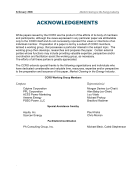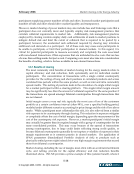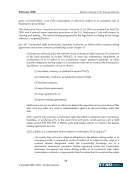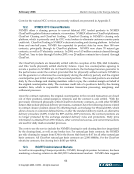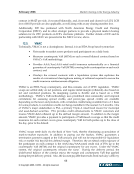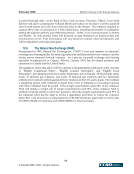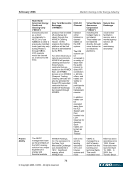February 2006 Market Clearing in the Energy Industry 5-25 © Copyright 2006, CCRO. All rights reserved. Market clearing could allow participants to net and set-off exposures across all ISO/RTO market products, which would allow for the more efficient allocation of credit and liquid resources (cash, Letters of Credit, etc.). Moreover, many of the clearing solutions today would allow for natural gas, both physical and financial, to be set-off against power activities in the ISO/RTO administered markets. And several clearing solutions aimed at the ISO/RTO administered markets would allow for the ability to net and set-off across ISO/RTO markets, as well as other markets such as futures on an exchange (e.g. NYMEX and OTC markets transacted on ICE). 4. Better correlate collateral requirements to market risks Market clearing solutions today all use risk based probabilistic approaches to risk management, including the use of such protections as initial margin based on a proprietary value-at risk (VaR), SPAN methodology, and variation margin for subsequent market movements. Using risk-based approaches, coupled with daily margining to managing exposure could provide ISO/RTOs with a higher degree of confidence that participants will meet obligations than with existing ISO/RTO credit requirements. 5.2. Merchants As a result of regulatory changes over the last 20 years, including FERC’s landmark rulemaking Order 888 in 1996, the competitive power sector has been by far the largest constructor of new generating capacity in the US. If fact, between 1992 to 2004, generators other than traditional utilities added 190,000 MW of generating capacity, representing approximately 70% of all new capacity. Competitive power suppliers and combined heat and powers companies today supply over 39% of the US installed generating capacity16. However, the merchant sector, due to a variety of events, is under tremendous financial strain. Solutions, such as market clearing, which potentially alleviate elements of that strain, significantly benefit the market place. This section discusses the current credit and financial state of the merchant generation sector and describes the impact of particular aspects of market clearing such as shorter payment cycles, and collateral netting and setoff, as well as describes the challenge of credit exposures provided by long dated structured transactions. 5.2.1. Current state of the market for merchants Since 2003, there has been a general contraction of the merchant generation sector, due to events such as the recession, Enron’s bankruptcy, oversupply of new generation in some markets in the US, and a contraction in spark spreads for gas fired generation. All of these factors have contributed to a collapse in credit ratings, a sharp decline in equity value, and limited access to capital markets for the merchant generation sector. With the downgrading of the merchant sector’s credit ratings by the major rating agencies, few merchant generators have access to unsecured credit from the ISO/RTOs, OATT Transmission providers or gas pipelines, since these entities have traditionally used a credit score of at least BBB-/Baa3 as the lowest rating for the granting of 16Source: EIA, Form EIA-860, Annual Electric Generator Report
Purchased by unknown, nofirst nolast From: CCRO Library (library.ccro.org)


